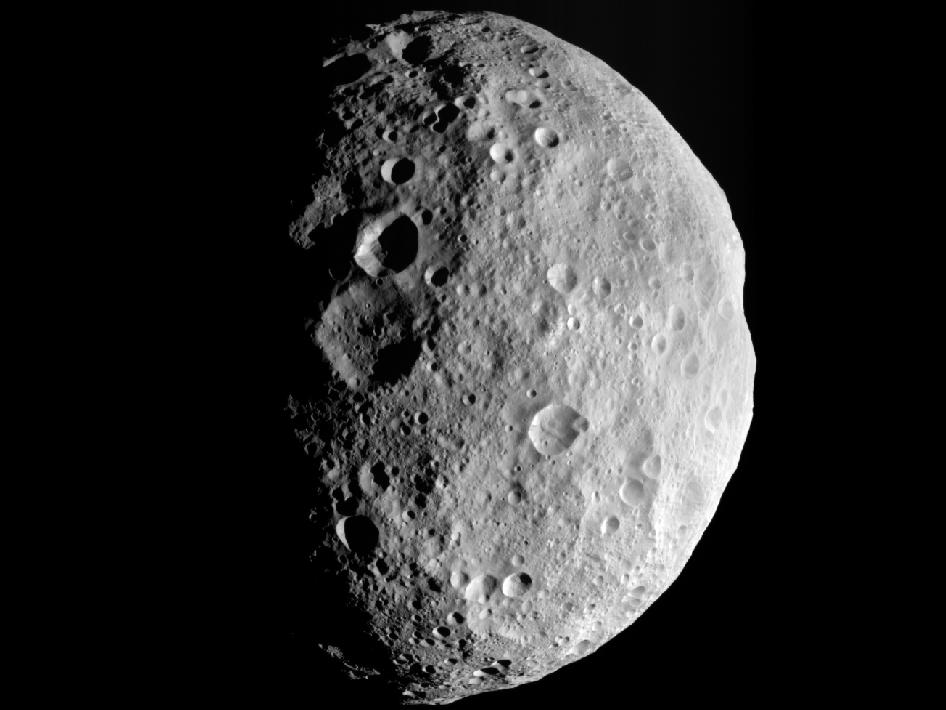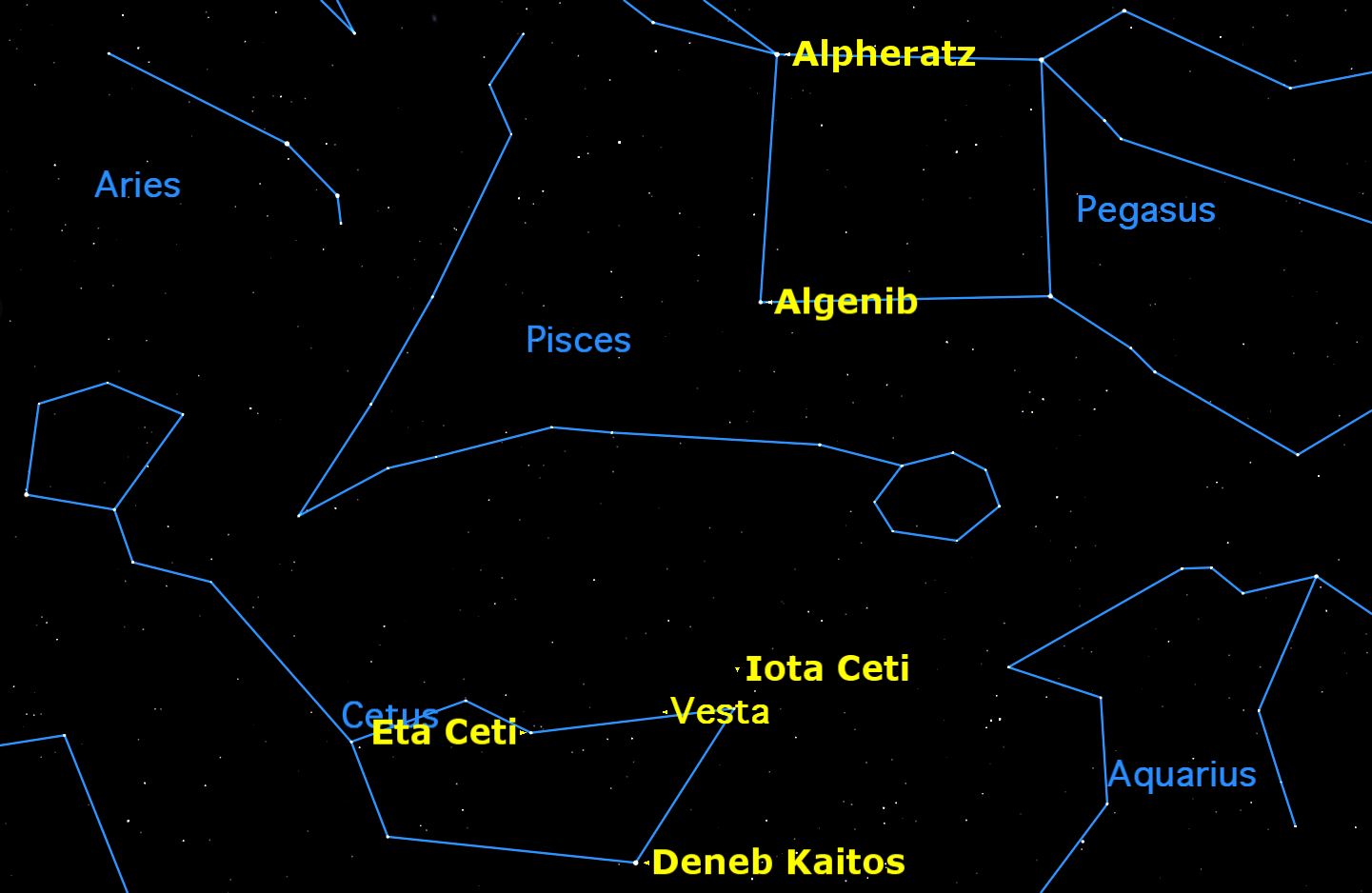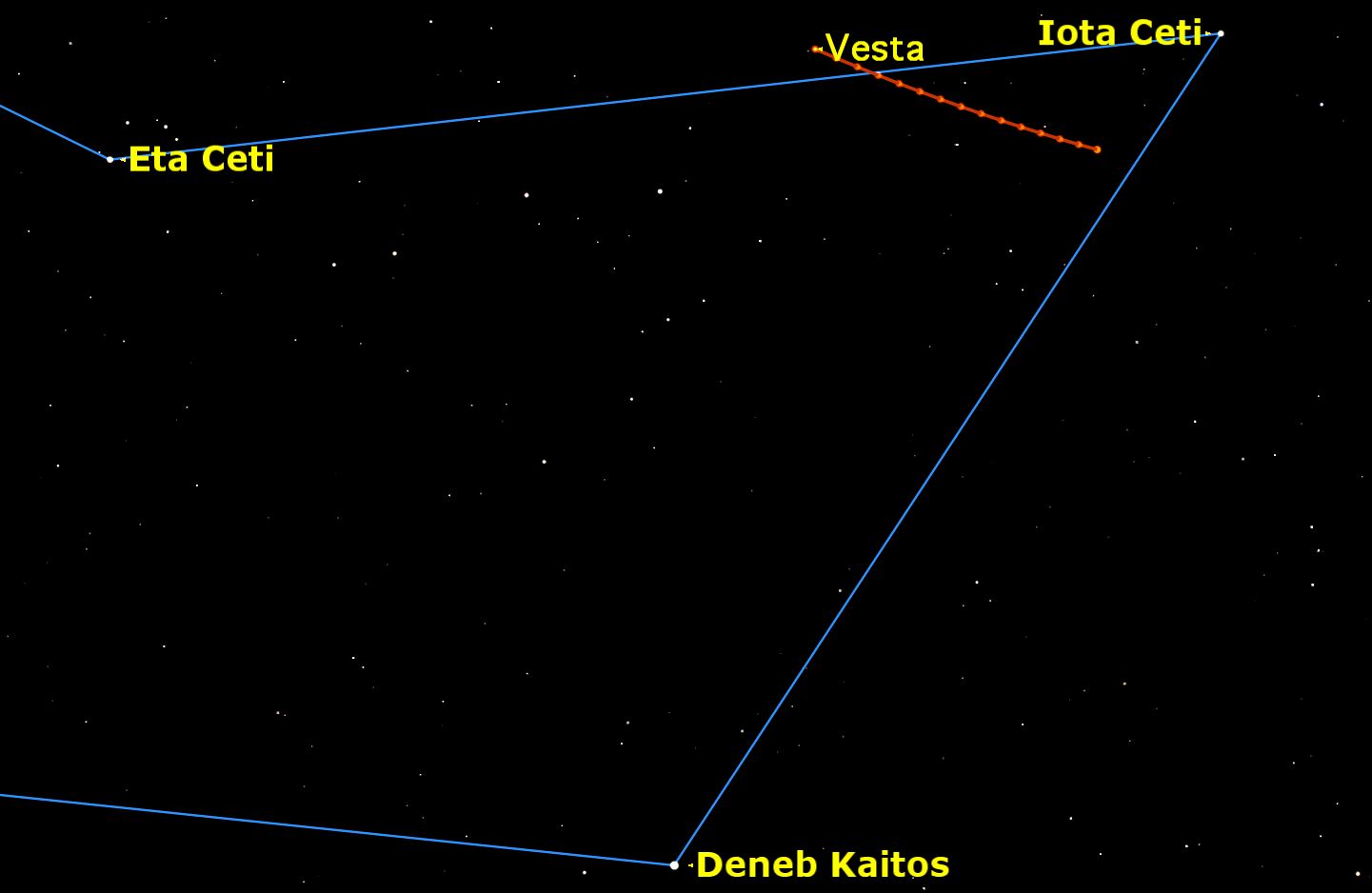How to Spot the Asteroid Vesta in October's Night Sky

The next two weeks provide an excellent opportunity to spot the brightest asteroid visible from EarthVesta — one of the best-known objects in the solar system.
In the first six years of the 19th century, astronomers discovered four new members of the solar system. All four were small objects between the orbits of Mars and Jupiter. Initially, they were called planets, but by the mid-1800s, enough new objects had been found in this area that they were given a category of their own, much as Pluto was reclassified from a planet to a dwarf planet. They were called "asteroids" because they were so small that they looked just like stars in the telescopes of the day. Now, there are tens of thousands of known asteroids.
Vesta is the brightest of all the asteroids, ranging between magnitudes 5 and 8 — lower is brighter — and one of the largest, measuring 318 miles (512 kilometers) across. It reached 6th magnitude at opposition on Sept. 29, meaning it could just barely be seen by someone with perfect eyesight at a perfectly dark site. [Take a Video Tour of Vesta, the Giant Asteroid]
The rest of us have to make do with binoculars. Here's how to find it.
The first chart, above, shows Vesta's overall position among the constellations of autumn. The two left-hand stars of the Square of Pegasus, Alpheratz and Algenib, point southward across the circlet of Pisces to the constellation Cetus, the Whale. Look for a large triangle formed by Eta, Iota Ceti and Deneb Kaitos. The latter is easy to spot because, although it's only second magnitude, it is by far the brightest star in this rather dim part of the sky. Eta and Iota are both magnitude 3.5, so they're quite a lot dimmer than Deneb Kaitos.
The second chart shows these three stars in detail, as well as the path of Vesta over the next two weeks. The leftmost end of Vesta's path (marked with the label on the chart) is its position on Wednesday, Sept. 30, and the points on the trail to the right show its position each night after that in October.
Vesta should be quite easy to spot, since it is about two magnitudes brighter than any of the stars along its track. Just to be sure, make a simple plot of the stars in its vicinity, and then check again a night or two later. The "star" that has moved is certain to be Vesta.
Breaking space news, the latest updates on rocket launches, skywatching events and more!
Vesta is now one of the best-known objects in the solar system because NASA's Dawn spacecraft orbited the asteroid for more than a year (from July 2011 to September 2012). This is a great chance for you to see it with your own eyes.
This article was provided to Space.com by Simulation Curriculum, the leader in space science curriculum solutions and the makers of Starry Night and SkySafari. Follow Starry Night on Twitter @StarryNightEdu. Follow us @Spacedotcom, Facebook and Google+. Original article on Space.com.

Geoff Gaherty was Space.com's Night Sky columnist and in partnership with Starry Night software and a dedicated amateur astronomer who sought to share the wonders of the night sky with the world. Based in Canada, Geoff studied mathematics and physics at McGill University and earned a Ph.D. in anthropology from the University of Toronto, all while pursuing a passion for the night sky and serving as an astronomy communicator. He credited a partial solar eclipse observed in 1946 (at age 5) and his 1957 sighting of the Comet Arend-Roland as a teenager for sparking his interest in amateur astronomy. In 2008, Geoff won the Chant Medal from the Royal Astronomical Society of Canada, an award given to a Canadian amateur astronomer in recognition of their lifetime achievements. Sadly, Geoff passed away July 7, 2016 due to complications from a kidney transplant, but his legacy continues at Starry Night.



